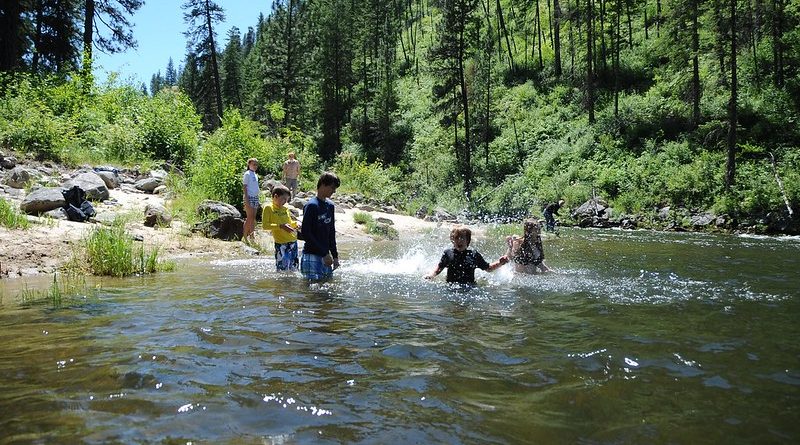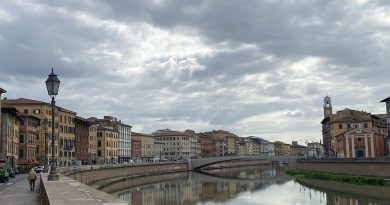The Great Lakes
At first glance, the Great Lakes region of the United States, those states of Ohio, Indiana, Illinois, Michigan, Wisconsin and Minnesota, may appear to be a patchwork quilt of cornfields, speckled with an occasional barn or factory, and nothing more. But this north-central region of the United States, located in the “heart of it all” has continually represented the essence of America’s history and rich cultural diversity.
One of the great presidents – many say the greatest—Abraham Lincoln grew up and lived in Illinois and Indiana. Canton, Ohio, the birthplace of the National Football League now boasts the Pro Football Hall of Fame devoted to the country’s most popular spectator sport. Cleveland houses the Rock n’ Roll Hall of Fame second to none. Surviving stretches of the infamous Route 66 span across Illinois, offering a step back in time to when thousands traveled these twisting roads in the 1920s in search of a better life. Mark Twain depicted life in America’s heartland in his novels often set on the legendary Mississippi River which forms borders for Minnesota, Wisconsin and Illinois.
And let’s not forget those Great Lakes, given that name for a reason. These inland fresh-water seas compile fifteen percent of the earth’s fresh water. Formed tens of thousands of years ago from glacial till and melt, they provided transportation for immigrants to pour into the region during the nineteenth century and establish themselves for future generations.
Today Lakes Superior, Huron, Michigan, Erie, and Ontario offer breathtaking scenery, numerous outdoor pursuits, and relaxing get-aways on their many islands. Activities in the Great Lakes are endless: white water raft on the rivers and streams of Wisconsin and Minnesota, sun bathe on the sandy beaches of Indiana’s National Lakeshore, roll down the giant sand dunes of western Michigan, admire the countless historical lighthouses decorating the shorelines, and sail – or if you’re feeling adventurous, water ski – on the great lakes. Not yet exhausted? Trade the great outdoors with the thriving nightlife of Chicago, Detroit, Cleveland and Milwaukee and find out for yourself what keeps America’s heartland beating.
Climate
“Wait a day and the weather will change” is a fitting description of climate in the Great Lakes region, especially in the spring and fall, because the region is affected by both warm, humid air from the Gulf of Mexico and cold, dry air from the Arctic. Weather typically varies from hot and humid summers to icy winters. Late spring (April to June) and early autumn (September to October) are ideal times with weather mild and crowds kept to a minimum. Summer months, considered the high season for Great Lakes islands are prime for boating and partaking in other water sports to cool from temperatures that can reach 90F. Vibrantly changing autumn foliage provides the perfect scenery for driving, trekking, camping.
Visas
All foreign visitors will need a US consulate visa, but in most places this can be done via a travel agent. Your passport must be valid for 6 months after your point of entry into the country.
Cash
The currency is the US $ dollar.
As of July 2023
1 EUR = $1.10 US
£1 sterling = $1.27 US
Check out your local currency exchange bureau for up-to-date conversions.
Accommodation costs vary throughout the Great Lakes states, and range from $40 for a budget motel to $100 a night in city centers like Chicago. Camping sites cost much less but many close for the winter months.
Travel
The best way to get around here is to rent a car. With a car of your own, you can steer your holiday any way you choose, driving from city to city or enjoying the quieter country roads of the region. You need to be at least 21 to do this with a valid international driving license. Ferries are also frequent between the Great Lakes islands and the mainland. To visit islands like Put-in-Bay in the Lake Erie Bass Islands, you can leave your car in the ferry parking lot in Port Clinton overnight.
Language
The most widely spoken language in the USA is English. In historically ethnic neighborhoods of the larger cities, you might overhear a bit of Spanish, Italian, Slovenian, or others.
Food
You can find just about any ethnic dish you might crave here, where the population consists of descendents of the waves of immigration in the 19th and 20th centuries. Family restaurants line quaint ethnic neighborhoods in the cities like Little Italy in Cleveland, while hearty home cooking can be found on country roads. More variety will be found in cities, including restaurants specializing in vegetarian cuisine featuring hummus dishes, falafels, and other tasty meatless alternatives.




